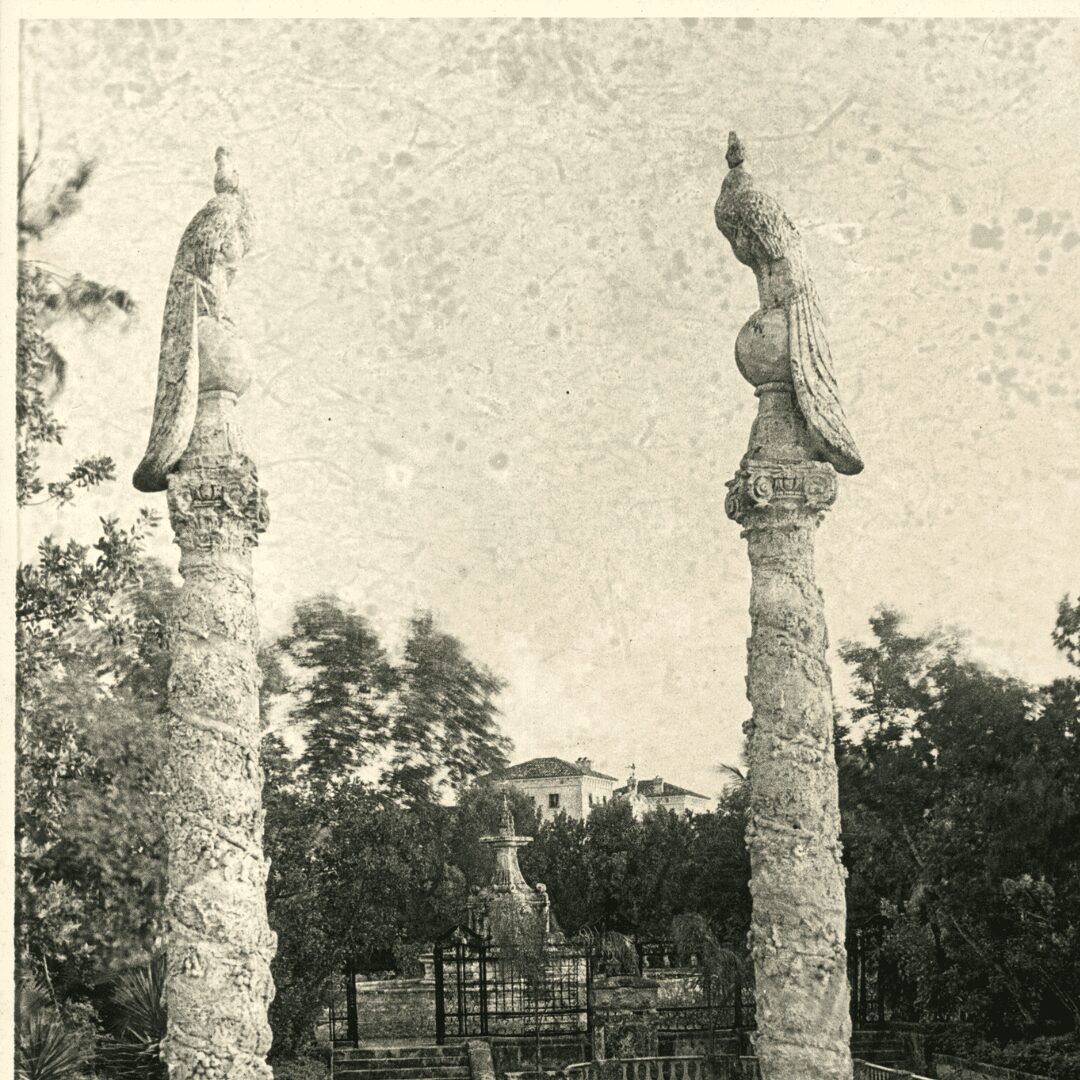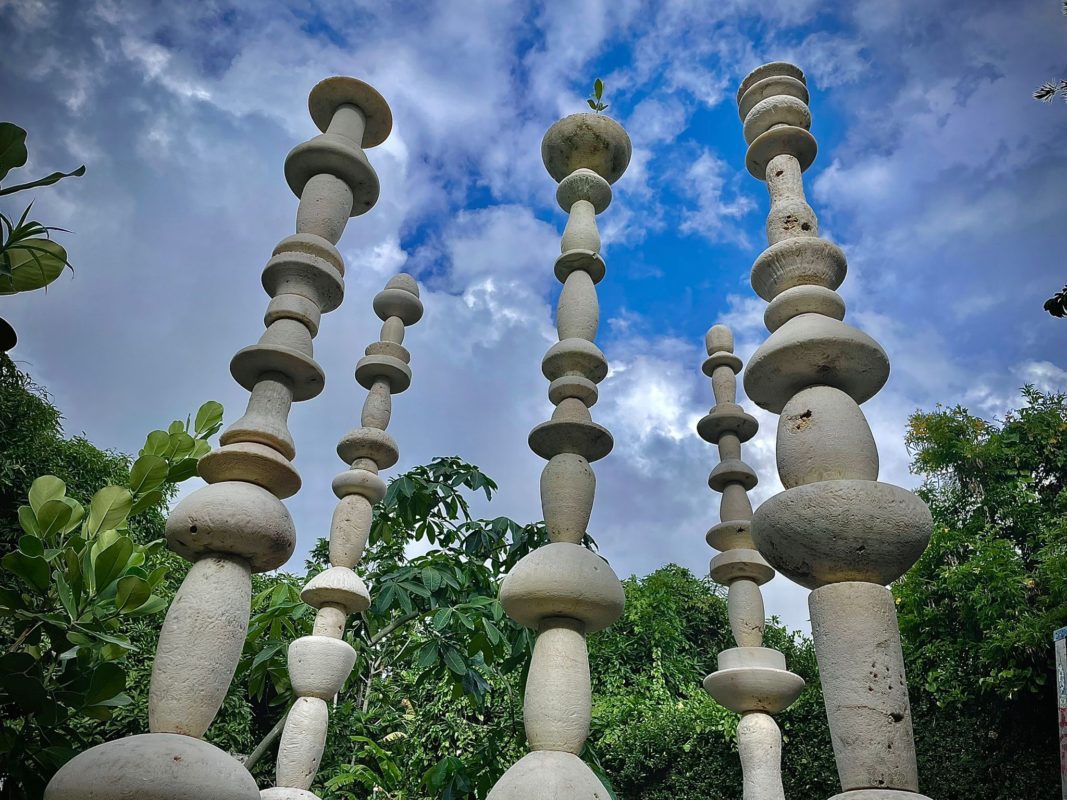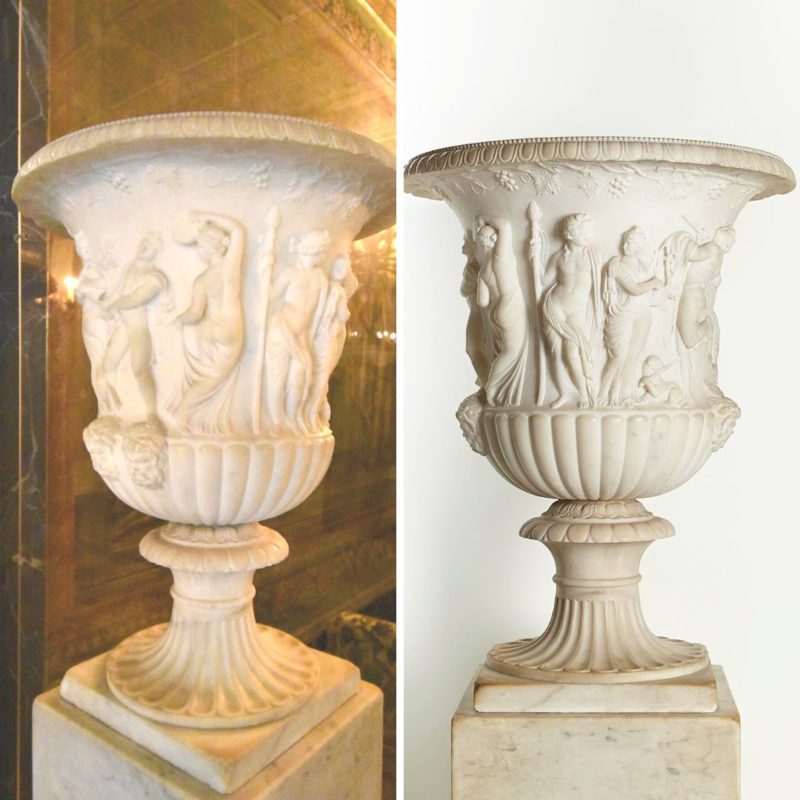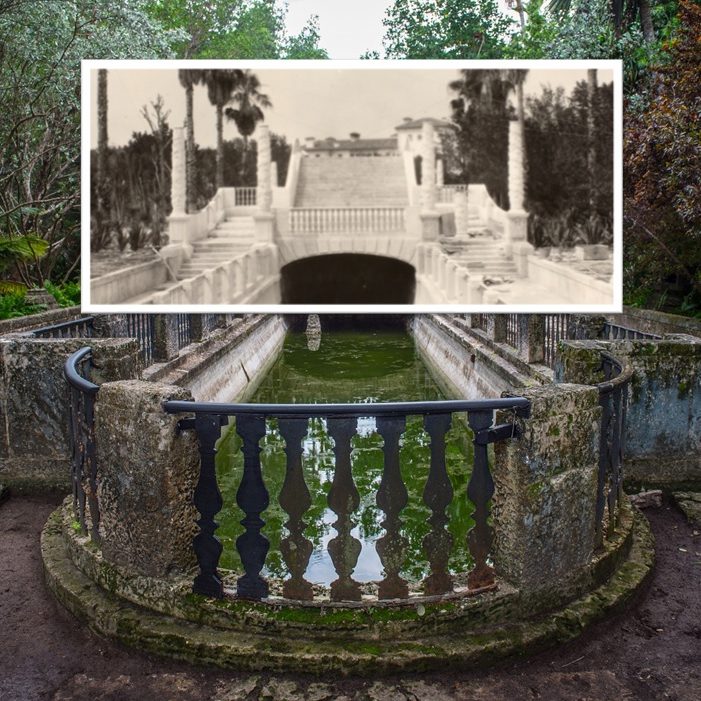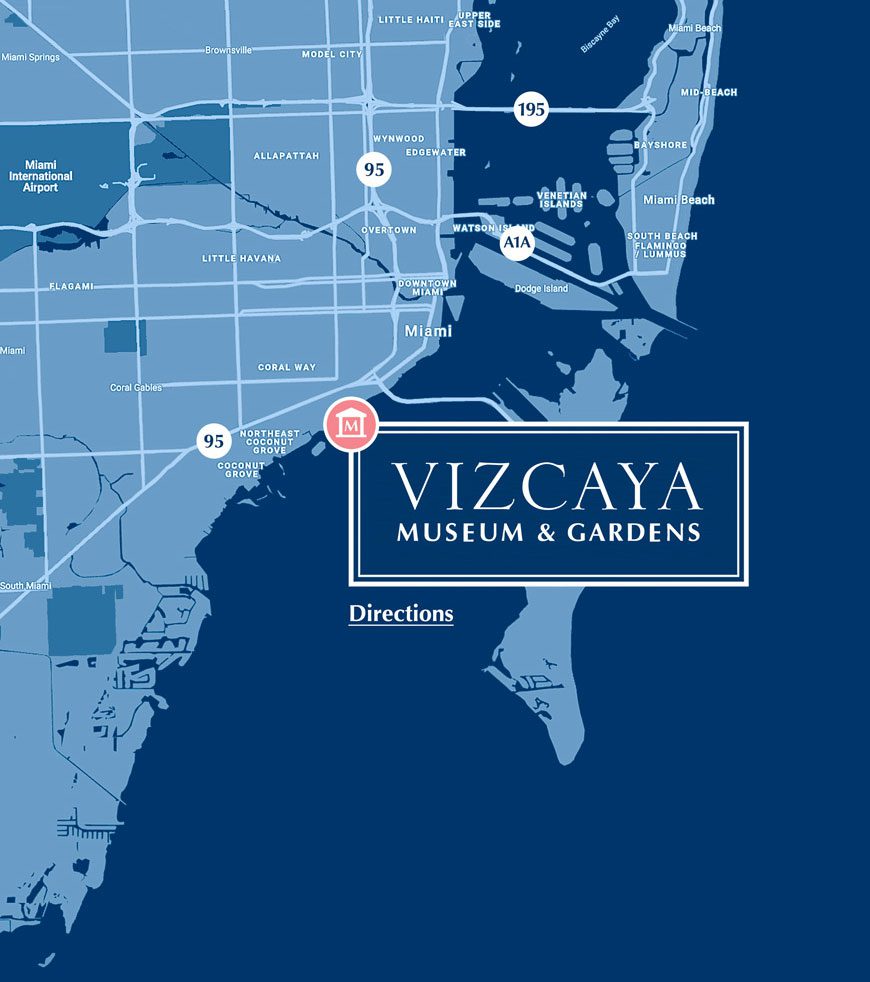Gaston Lachaise
Lachaise (1882–1935) joined the Vizcaya project in mid-1920 as the formal gardens were nearing completion. A prominent sculptor, he was commissioned to create sculptural work on top of decorative columns for the Marine Garden. This garden marked the transition from the formal gardens to the more natural and wild Lagoon Gardens that no longer exist today. The layout of the Marine Garden proposed eight columns, each topped with a peacock, known as “Peacock Bridge.”
Lachaise sent an estimate for the proposed work that would cost $2,000 (the equivalent to almost $30,000 today) for two plaster models, which he shipped to Miami in December of 1920. The completed Marine Garden, albeit half of the total garden from the perspective on top of the bridge, is shown in the photograph.
Due to Miami’s harsh subtropical environment, Lachaise’s peacocks have deteriorated and, along with the columns, have been placed in storage to protect them.
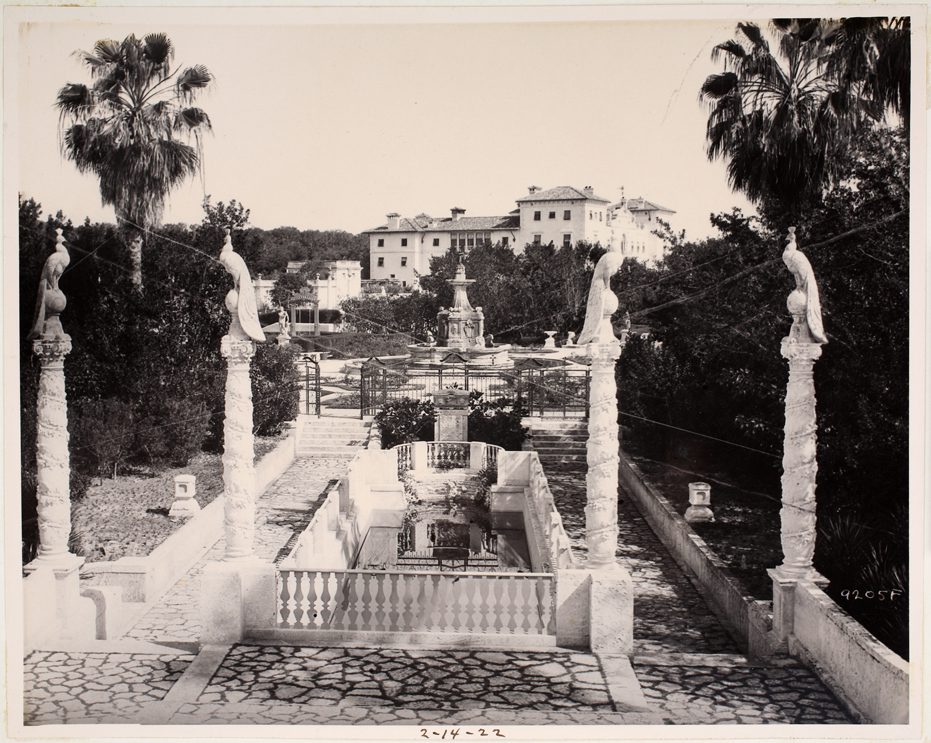
Marine Garden
The design and creation of the Marine Garden was a collaborative effort, as were many of the projects at Vizcaya. Paul Chalfin, Vizcaya’s Artistic Director, was responsible for the overall design of the area, including the columns. Lachaise was responsible for designing the peacocks and began his work offsite by creating clay models. Once the models for the peacocks arrived at Vizcaya, a skilled stone carver used them to begin carving the full-size peacocks.
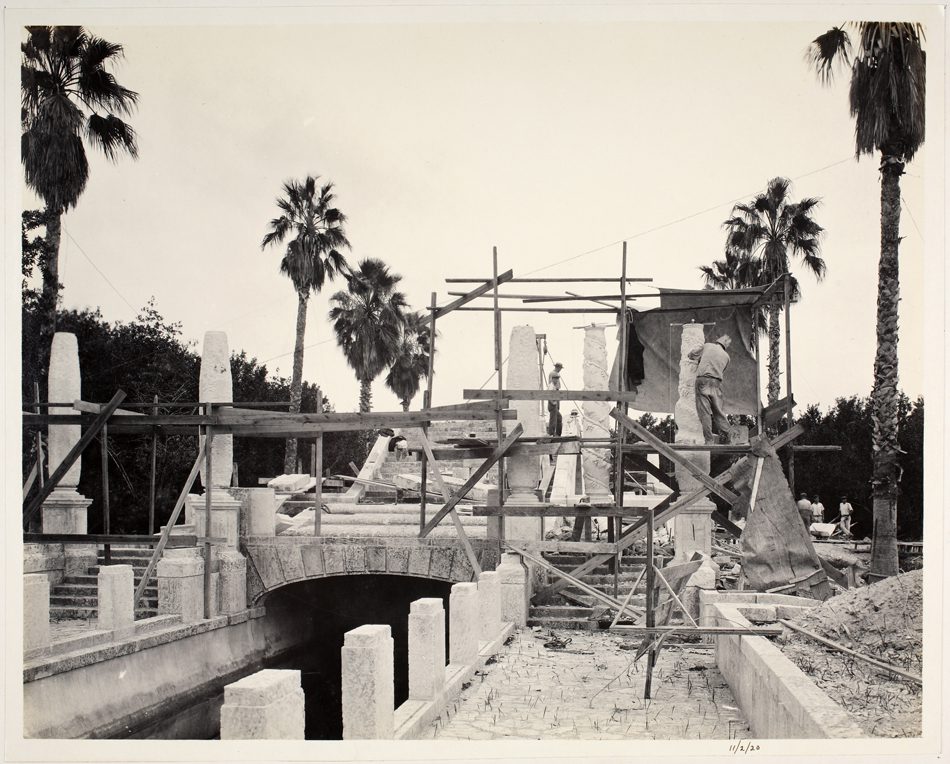
Peacocks
Peacocks commonly roost in tall locations, such as trees. Originally on top of a stone column more than eight feet high, this sculpture imitated peacocks in their natural habitat. The train of feathers cascades around a pedestal designed by Chalfin seen in the blueprint below.
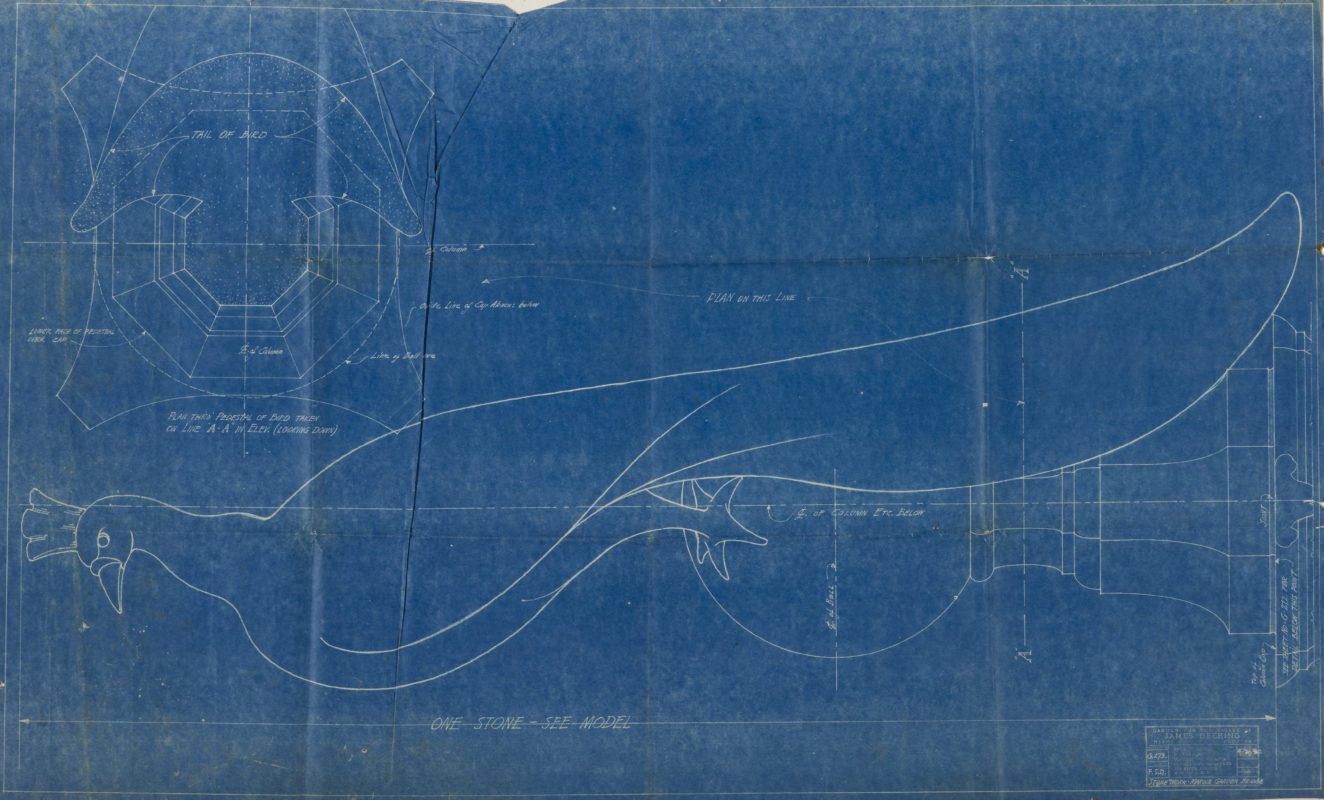
The sculpture is a remarkable example of the local coral limestone that was used throughout the estate for sculptural and architectural elements carved on-site, rather than imported from elsewhere.
Though Vizcaya’s Artistic Director, Paul Chalfin, intended for the peacocks to symbolize an exotic location, today there is a community of peacocks living in Coconut Grove just south of Vizcaya. On occasion, they wander onto the property and have been spotted in the formal gardens and terraces around the Main House.
The Garden Centennial Campaign
In honor of the 100th anniversary of Vizcaya’s gardens, the Garden Centennial Campaign raises funds for three key centennial conservation projects. One of these will return Lachaise’s peacock designs to the historic Peacock Bridge in collaboration with the Lachaise Foundation.
To learn more, please watch the video below. You can contribute to this campaign bvy making a donation online.


